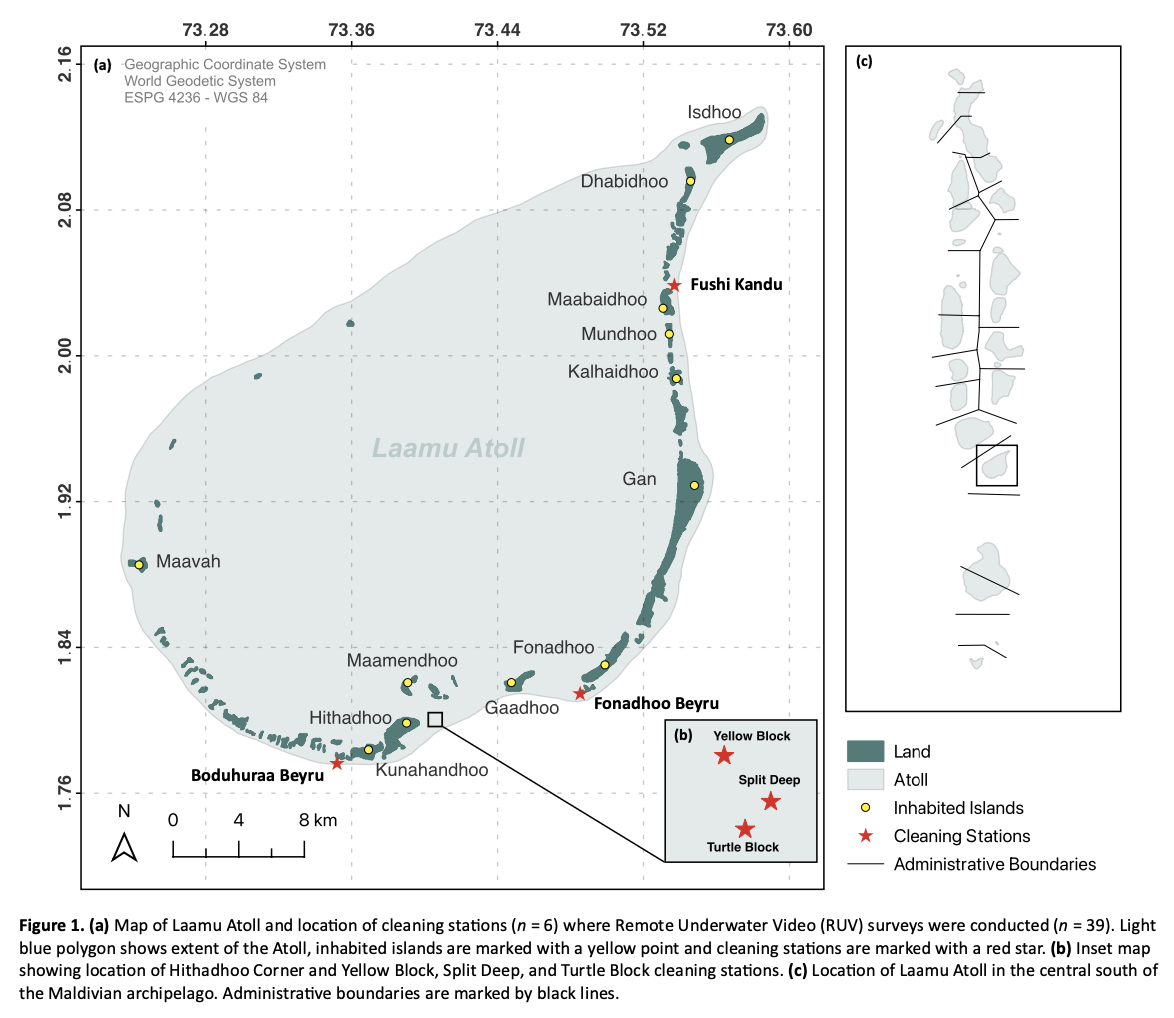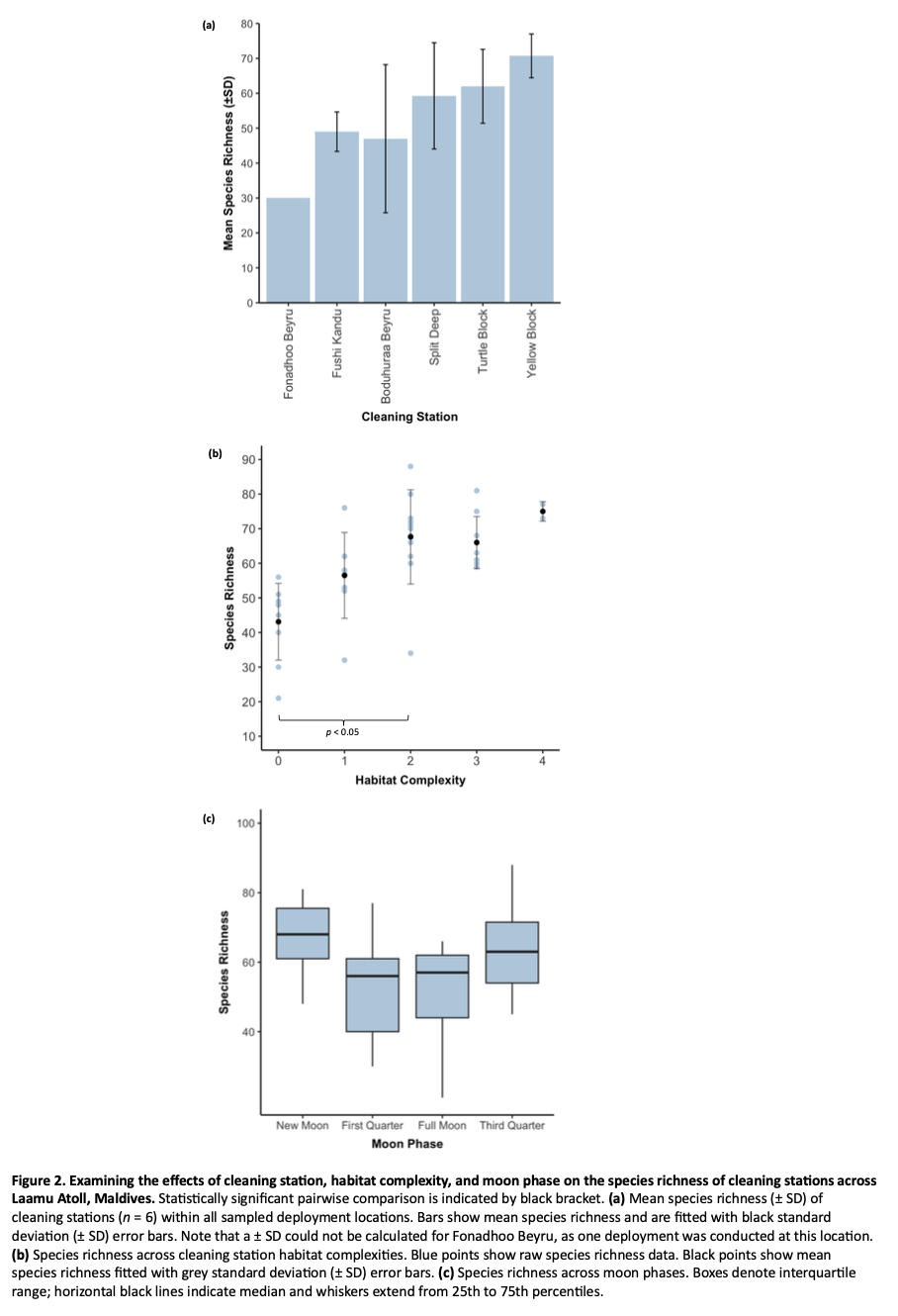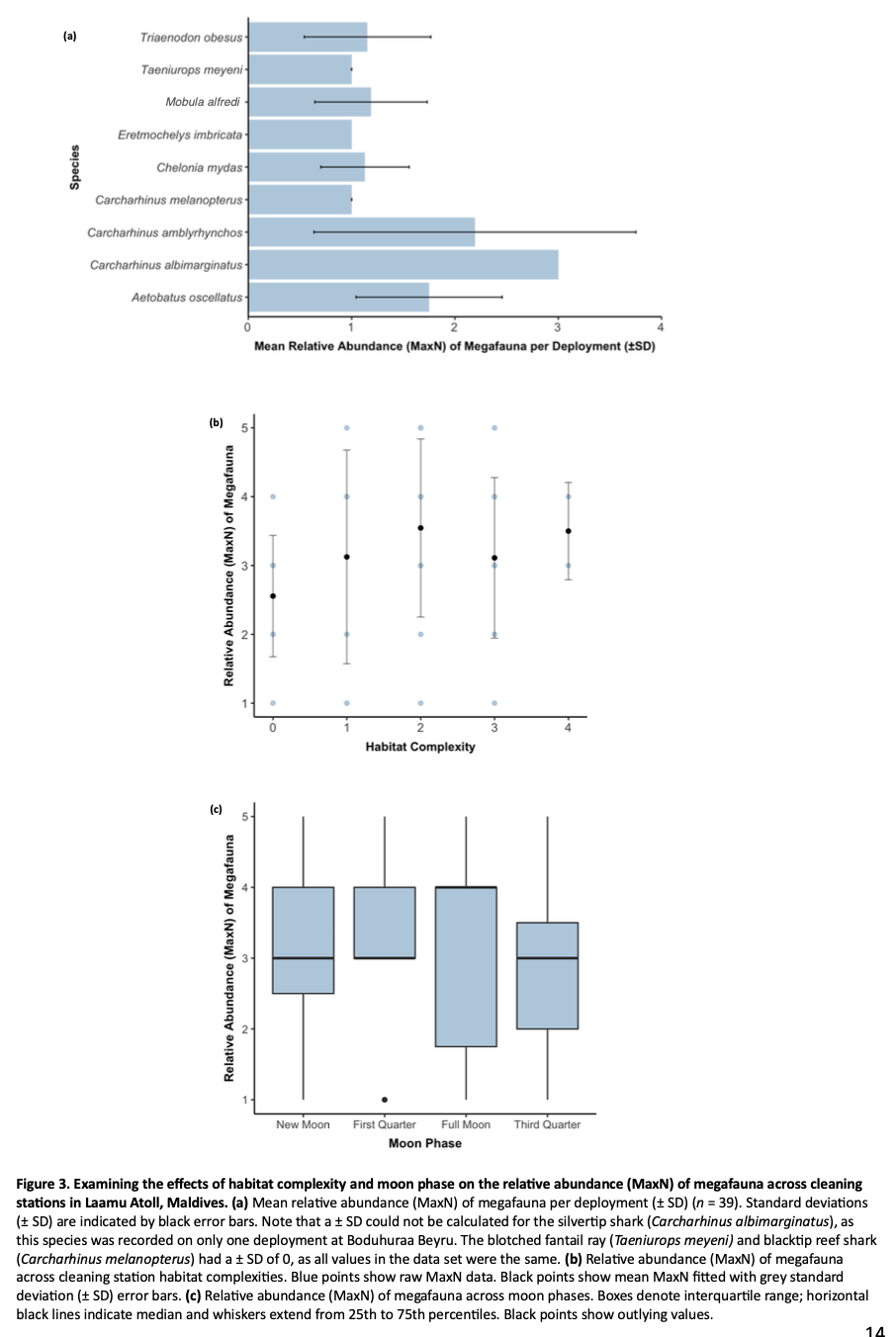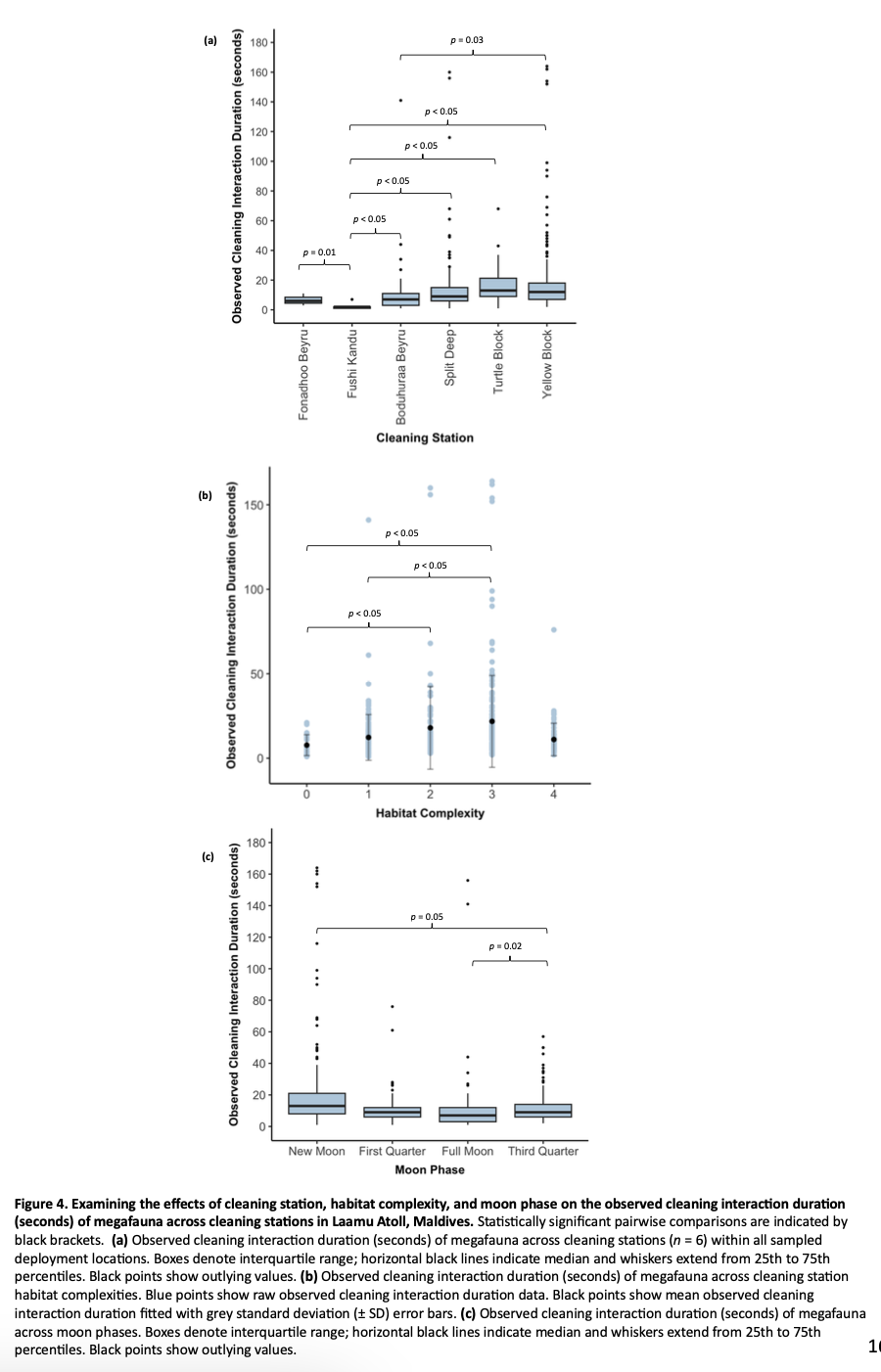Understanding the species richness of cleaning stations and ecological role of cleaning symbioses in Laamu Atoll, Maldives, using data from Remote Underwater Video (RUV) surveys
2023
Tessa McCormack (MSc - University of Exeter)




Summary: This study explores cleaning symbioses in coral reefs, focusing on Laamu Atoll, Maldives. Remote Underwater Video surveys from September 2022 to April 2023 reveal 153 species across six cleaning stations. Habitat complexity significantly influences species richness, emphasizing the importance of structurally complex coral reefs for cleaning symbioses. Conservation efforts should target these sites, especially amid rising anthropogenic pressures threatening habitat degradation. Regular monitoring and deeper understanding of symbiotic dynamics are crucial for future research and conservation strategies.
Abstract
“Coral reefs are highly productive marine ecosystems that support a range of biological processes, including cleaning symbioses. To date, previous studies have focused primarily on reef manta rays (Mobula alfredi) and there is a lack of research concerning cleaning interactions of other megafauna. This study aims to examine the effects of cleaning station, habitat complexity, and moon phase on species richness, relative abundance (MaxN) of megafauna, and cleaning interaction duration of megafauna across six cleaning stations in Laamu Atoll, Maldives. Remote Underwater Video (RUV) surveys (n = 39) were conducted across cleaning stations from September 2022 to April 2023. A total of 153 species from 33 families and 14 orders were identified across cleaning stations. Generalised Linear Models (GLMs) were used to show that habitat complexity had a statistically significant effect on species richness, with cleaning stations with a habitat complexity score of 4 having the greatest mean number of species (75.00 ± 2.83). Cleaning station, habitat complexity, and moon phase had statistically significant effects on cleaning interaction duration of megafauna. Yellow Block cleaning station (16.80 ± 20.70), habitat complexity score of 3 (21.80 ± 27.20), and the New Moon phase (19.30 ± 24.20) showed longer mean cleaning interaction durations. These findings highlight how important structurally complex coral reefs are for supporting cleaning symbioses and suggest that conservation efforts should be targeted towards protecting these sites and the megafauna that utilise them. Furthermore, anthropogenic pressures are expected to increase habitat degradation and future research would benefit from regular monitoring of these cleaning stations and a deeper understanding of the dynamics of cleaning symbioses and costs of these mutualistic interactions at a species and population level. “
Author Affiliations
University of Exeter
The Manta Trust
Maldives Manta Conservation Programme
Maldives Underwater Initiative (MUI) by Six Senses Laamu
Hadhdhunmathi Hithadhoo Council
